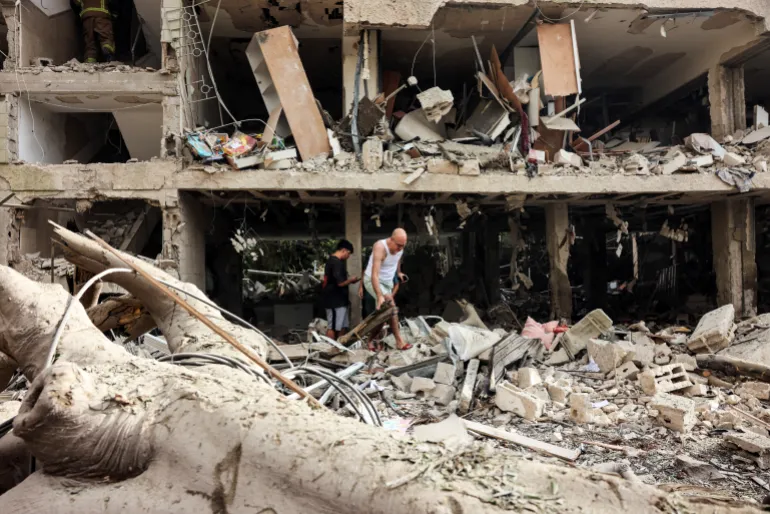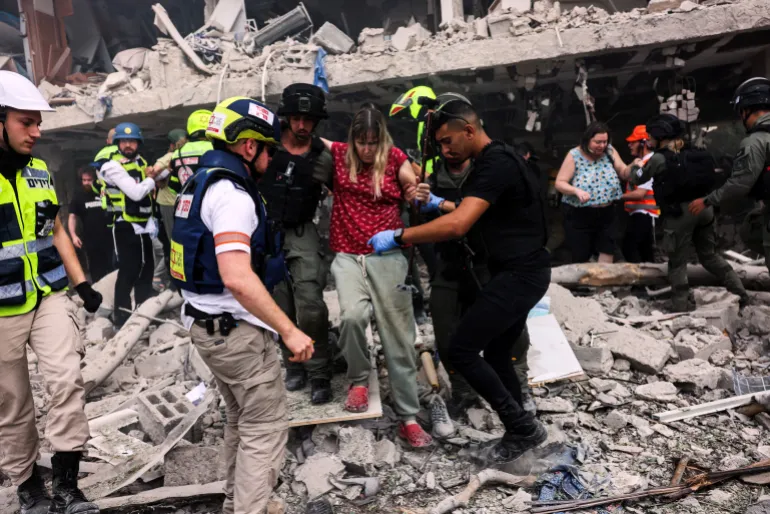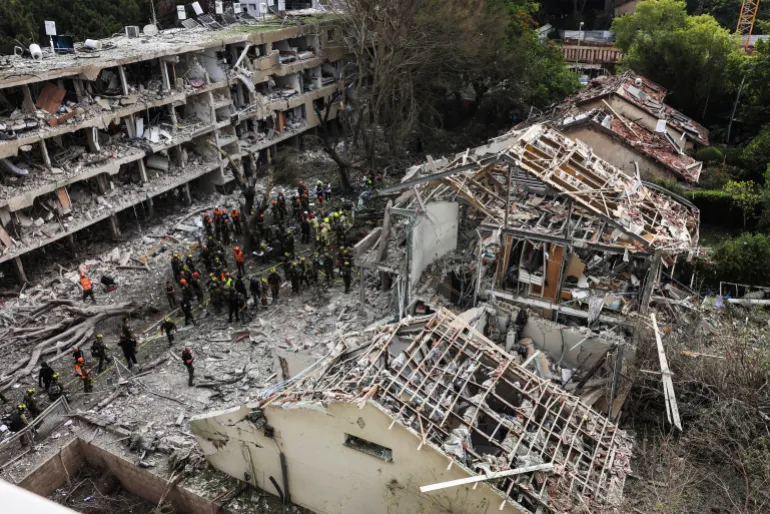US Airstrikes on Iranian Nuclear Facilities 2025: Impacts on Global Oil Prices, Security, and NPT
In a stunning escalation of Middle East tensions, former US President Donald Trump confirmed a series of airstrikes on Iranian nuclear facilities at Fordow, Natanz, and Isfahan. Labeling the operation “very successful,” Trump warned of further military action if Iran retaliated. The strikes have sent shockwaves through global energy markets, provoked strong condemnation from multiple nations, and reignited a complex debate over nuclear proliferation and international law.
This long-form article explores the geopolitical consequences, global economic fallout, and legal implications under the Nuclear Non-Proliferation Treaty (NPT) following the 2025 US strikes on Iran.
Overview of the US Strikes on Iran’s Nuclear Facilities

What Happened?
- Date of Attack: June 22, 2025
- Targets: Fordow, Natanz, and Isfahan – Iran’s most heavily guarded and advanced nuclear sites
- Weapons Used: US deployed GBU-57 bunker buster bombs capable of penetrating 200 feet underground
- Stated Objective: To disable Iran’s ability to develop nuclear weapons
- US Political Context: Announcement made amid Trump’s 2025 presidential campaign comeback trail
1. Economic Shockwaves: Oil Markets in Turmoil
One of the most immediate global impacts was felt in the crude oil market. Iran, a OPEC member and home to the world’s fourth-largest proven oil reserves, is vital to the global energy supply chain.
Crude Oil Prices Soar
Following the strikes, Brent Crude surged past $120 per barrel, its highest since 2022.
Traders reacted to fears that Iran might block the Strait of Hormuz, a narrow chokepoint through which 20% of global oil flows.
Strategic Oil Reserves Triggered
- The US and EU began talks to release strategic petroleum reserves to stabilize markets.
- India and China, heavily reliant on Iranian oil, announced emergency energy meetings.
High CPC Focus:
- “Impact of US-Iran Conflict on Crude Oil Prices”
- “Oil Futures and Global Recession Risk After Iran Nuclear Strikes”
- “Best Energy Stocks to Invest in During Middle East Crisis”
2. Regional Fallout: Escalation Risk in the Middle East
Iran’s Likely Response
Experts believe Iran cannot afford a non-response. The symbolic and strategic damage demands retaliation.
- Potential Iranian retaliation includes missile strikes on US bases in Iraq, Qatar, Bahrain, and UAE.
- Iranian-backed militias in Syria, Lebanon, and Iraq could intensify activity.
- Houthi rebels in Yemen may disrupt shipping lanes in the Red Sea.
Expert Insight:
Mehran Kamrava, a Georgetown University professor, told Al Jazeera:
“The region is full of US military assets. That means 40,000 American targets that Iran may consider.”
3. Legality Under International Law: Did the US Violate the NPT?
Iran has formally petitioned the International Atomic Energy Agency (IAEA) and United Nations, accusing the US of:
- Violating the UN Charter
- Engaging in aggression without a UN mandate
- Breaching Article 2(4) of the UN Charter which prohibits the use of force
Nuclear Non-Proliferation Treaty (NPT) in Crisis
Iran’s parliament is now openly considering invoking Article 10 of the NPT, allowing withdrawal due to “extraordinary events.”
What is Article 10 of the NPT?
“Each Party shall, in exercising its national sovereignty, have the right to withdraw from the Treaty if it decides that extraordinary events… have jeopardized the supreme interests of its country.”
If Iran withdraws:
- IAEA inspections would end
- Unrestricted uranium enrichment could resume
- New nuclear arms race in the Middle East might begin
4. Global Political Reactions: Diplomatic Earthquake
European Union
- EU’s foreign policy chief Kaja Kallas called for de-escalation and a return to talks.
- Emergency EU Foreign Ministers’ meeting convened to assess crisis response.
Oman & Qatar
- Oman labeled the attack a “flagrant violation” of international law.
- Qatar warned of “catastrophic repercussions” if military operations continue.
India & China
- Both expressed deep concern.
- India urged all parties to exercise restraint.
- China proposed a UN Security Council session for immediate peacekeeping intervention.
5. The ‘Rally Around the Flag’ Effect Inside Iran

Despite internal political fractures, Iranians are now uniting in defense of national sovereignty.
Iranian analyst Foad Izadi explained that many now believe the US-Israel goal isn’t just regime change — but Balkanisation of Iran.
“There’s growing fear that the West wants to divide Iran into several regions, particularly stripping oil-rich areas.”
Nationalism Surges:
- Record enlistment in Iran’s Revolutionary Guard Corps (IRGC)
- Protests outside Western embassies
- Mass anti-US demonstrations in Tehran and Mashhad
6. Bunker Busters and the Tech Behind the Strikes
The GBU-57 Massive Ordnance Penetrator, developed by Boeing, was reportedly used in the attacks. It’s specifically built to destroy hardened targets like underground nuclear bunkers.
Features:
- Weight: 13,600 kg (30,000 lbs)
- Warhead: 2,700 kg
- Penetration Depth: Up to 61 meters
- Guidance System: GPS-assisted
Iran claims no enriched uranium was destroyed, but this is disputed.
7. Political Fallout in the US: War Powers vs. Trump
While Trump’s supporters praised the move as a decisive blow to Iran’s nuclear ambitions, Democrats have called the strikes illegal under the 1973 War Powers Act.
Reactions:
- Democrats: Urging impeachment, citing unilateral military action without congressional approval
- Republicans: Mostly supportive, citing “national security”
- Libertarian voices: Rand Paul, Thomas Massie condemned the attack as “reckless”
Diplomatic and International Reactions
| Country/Entity | Reaction | Key Statement/Action |
|---|---|---|
| Iran | Outraged | “Brutal military aggression” – FM Araghchi at OIC summit |
| Israel | Active retaliation | Conducted coordinated strikes on Iranian military assets |
| UK | Not involved | Informed of strikes; Diego Garcia not used |
| OIC (Organisation of Islamic Cooperation) | Condemned US-Israel strikes | Emergency discussion led by Iran’s foreign minister |
| UN Charter Violations | Alleged | Experts claim both US and Israel violated IAEA and UN protocols |
Major Military Actions (Past 24–48 Hours)
| Actor | Target | Location | Weapons Used | Reported Outcome |
|---|---|---|---|---|
| US | Fordow Nuclear Site | Iran | 6 GBU-57 bunker busters | Significant underground damage |
| US Submarines | Natanz & Isfahan | Iran | 30 Tomahawk missiles | Major infrastructure damage |
| Israel | Dezful Airport | Iran (Khuzestan) | Fighter jets | 2 Iranian F-5 jets destroyed |
| Iran | Ramat Aviv, Tel Aviv | Israel | 40 missiles | 27 civilians wounded |
| Israel | Tabriz (IRGC camp) | Iran | Airstrike | 2 injuries; facility hit |
Strategic Military Assets Involved
| Asset | Operator | Role in Conflict | Location of Deployment |
|---|---|---|---|
| B-2 Spirit Bomber | US Air Force | Struck Fordow nuclear facility | Launched from Missouri, refueled mid-air |
| Tomahawk Cruise Missiles | US Navy | Long-range precision strikes | From submarines 400 miles offshore |
| Israeli F-16/F-35 Jets | Israeli Air Force | Attacked Iranian military sites | Launched from undisclosed locations |
| IRGC Missile Systems | Iran | Retaliatory attack on Israel | Launched from undisclosed bases in Iran |
Geopolitical Impact: Legal and Security Concerns
| Topic | Description | Implication |
|---|---|---|
| UN Charter Violation | Iran & scholars claim US broke Article 2(4) | Undermines global law framework |
| IAEA Charter Breach | Attacks on safeguarded nuclear sites | Weakens credibility of inspections |
| Potential Iran NPT Exit | Due to Article 10 trigger | Would remove nuclear oversight |
| Security of US Bases | 50+ in the region, including Iraq, Qatar, UAE | Iran may retaliate strategically |
| GCC Nations’ Neutrality | Qatar, Oman maintaining ties | May pressure US to de-escalate |
Civilian & Infrastructure Damage Overview
| Location | Country | Attack Source | Reported Damage |
|---|---|---|---|
| Ramat Aviv | Israel | Iranian missiles | 27 wounded, residential buildings destroyed |
| Isfahan Airport | Iran | Israeli fighter jets | Airport & surrounding military assets hit |
| Dezful Airbase | Iran | Israel | 2 Iranian F-5 fighter jets destroyed |
| Martyr Madani Camp, Tabriz | Iran | Israel | 2 wounded, thick smoke, partial structural loss |
US Strategic Bombers Used in Iran Strikes
| Aircraft | Type | Role | Max Range | Payload Capacity | Mission in Iran Strikes |
|---|---|---|---|---|---|
| B-2 Spirit | Stealth Bomber | Long-range precision strikes | 11,000 km (non-stop) | 18,000 kg (40,000 lbs) | Struck Fordow facility with GBU-57s |
| B-52 Stratofortress | Heavy Bomber | High-altitude long-duration strikes | 14,000 km | 31,500 kg | Deployed six bunker busters on Fordow |
| US Navy Submarines | Launch platform | Tomahawk cruise missile launches | N/A (stealth subs) | 154 missiles per sub (max) | Fired 30 Tomahawks at Natanz & Isfahan |
Types of Weapons Used in the US Airstrikes

| Weapon | Type | Delivery System | Weight | Features | Target |
|---|---|---|---|---|---|
| GBU-57 Massive Ordnance Penetrator | Bunker Buster | B-2 & B-52 Bombers | 13,600 kg (30,000 lbs) | Penetrates 60 meters underground | Fordow |
| Tomahawk Cruise Missile | Precision Missile | US Navy Submarines | ~1,600 kg | 1,000+ mile range, terrain-hugging | Natanz & Isfahan |
Iranian Nuclear Facilities Targeted – Technical Overview
| Facility | Location | Function | Defense Mechanism | Strike Outcome |
|---|---|---|---|---|
| Fordow | Near Qom, buried under mountain | Uranium enrichment (3.5%–20%) | Deep underground, heavily fortified | Hit by 6 bunker busters; partial destruction |
| Natanz | Isfahan Province | Primary enrichment site | Air defenses, underground centrifuges | Targeted with Tomahawk missiles; extensive damage reported |
| Isfahan | Central Iran | Fuel fabrication, storage | Moderate protection | Damaged by long-range missile strike |
Operation Details and Strategic Summary
| Detail | Description |
|---|---|
| Mission Duration (B-2) | ~37 hours round-trip (Missouri to Iran) |
| Refueling | Multiple mid-air refuels by KC-135 tankers |
| Evacuation Report | Iranian officials claimed prior evacuation of nuclear workers |
| Political Coordination | Alleged US-Israel cooperation in target selection |
| Media Confirmation | Sean Hannity (Fox News) cited Trump’s confirmation of B-52 and Tomahawk involvement |
Iranian Nuclear Facilities Targeted in 2025 Airstrikes
| Facility Name | Location | Purpose | Year Operational | Strike Impact (Reported) |
|---|---|---|---|---|
| Fordow | Near Qom | Uranium enrichment, deep underground | 2009 | Heavy structural damage from GBU-57 |
| Natanz | Isfahan Province | Main enrichment facility | 2007 | Partial destruction; some uranium stockpile believed intact |
| Isfahan | Central Iran | Conversion & uranium storage | 2004 | Hit by precision strikes; fuel damage unclear |
Global Reactions to US Strikes on Iran – At a Glance
| Country/Bloc | Position | Statement Summary |
|---|---|---|
| European Union | Neutral, de-escalation | Urged “return to dialogue” and “prevent further escalation” |
| Oman | Condemnation | Called it a “flagrant violation” of international law |
| Qatar | Critical | Warned of “catastrophic repercussions” |
| Iraq | Concerned | Decried threat to regional peace and security |
| China & Russia | Strongly opposed | Called for emergency UNSC session |
| Israel | Supportive | Coordinated with US; silent officially but implied support |
Legality Under the NPT and International Law
| Treaty/Law | Relevant Clause | US Action | Legal Debate |
|---|---|---|---|
| UN Charter (Article 2(4)) | Prohibits use of force | Violated, say critics | No UN authorization for strikes |
| NPT (Article 10) | Allows withdrawal during extraordinary threat | Invoked by Iran | Legal if security is compromised |
| War Powers Act (1973) | Requires Congressional approval | Violated, say Democrats | Trump did not seek approval |
Impact of Iran Conflict on Global Oil Markets
| Indicator | Pre-Strike | Post-Strike (48 Hours) | % Change |
|---|---|---|---|
| Brent Crude Price (USD/barrel) | $87.50 | $121.10 | +38% |
| WTI Crude (USD/barrel) | $82.90 | $117.25 | +41% |
| Gold Price (USD/oz) | $2,350 | $2,590 | +10.2% |
| S&P 500 Energy Sector | 465 points | 510 points | +9.7% |
Military Presence of the US in the Middle East
| Country | US Bases | Estimated Troops | Risk Level (If Iran Retaliates) |
|---|---|---|---|
| Iraq | 4 major | ~2,500 | High |
| Qatar | Al Udeid Air Base | ~10,000 | Medium-High |
| UAE | Al Dhafra Air Base | ~3,500 | Medium |
| Bahrain | Naval Support Activity Bahrain | ~7,000 | High |
| Kuwait | Camp Arifjan | ~13,000 | Medium |
| Saudi Arabia | Multiple deployments | Classified | Medium |
What Happens Next? Scenarios for 2025 and Beyond
Possible Scenarios:
| Scenario | Description | Probability |
|---|---|---|
| Diplomatic Off-Ramp | EU, China, and Russia mediate a ceasefire and new JCPOA framework | Moderate |
| Full-Scale War | Iran retaliates, US escalates, Gulf becomes a battleground | High |
| Iran Leaves NPT | Iran withdraws and resumes nuclear weapon development | Very High |
| Israeli Involvement Grows | Israel continues shadow war on Iranian targets | Already Ongoing |
Conclusion: World on the Edge After US-Iran Nuclear Conflict
The 2025 US airstrikes on Iran’s nuclear facilities represent a watershed moment for global diplomacy, energy markets, and nuclear non-proliferation. As oil prices rise and tensions flare, the international community faces a stark choice: rein in escalating violence or risk plunging into a broader Middle Eastern war with global repercussions.
Whether Iran retaliates, exits the NPT, or seeks new alliances, one thing is clear: the geopolitical landscape has changed permanently.
FAQs
Q1. Why did the US strike Iran’s nuclear facilities?
A1. Former President Trump claimed it was to prevent Iran from developing nuclear weapons. Critics argue it was politically motivated and lacked legal justification.
Q2. Can Iran legally leave the NPT?
A2. Yes. Under Article 10 of the NPT, any member can withdraw if it believes its supreme national interests are at risk.
Q3. Will this conflict impact global oil prices long-term?
A3. Likely yes. Disruption in Iran or the Strait of Hormuz can spike prices significantly.
Q4. Could this lead to a broader Middle East war?
A4. If Iran retaliates militarily, especially against US or Israeli assets, a regional war is highly possible.
Q5. Are US actions legal under international law?
A5. Legal experts argue the strikes violated the UN Charter and the War Powers Act. It remains a contentious issue.

